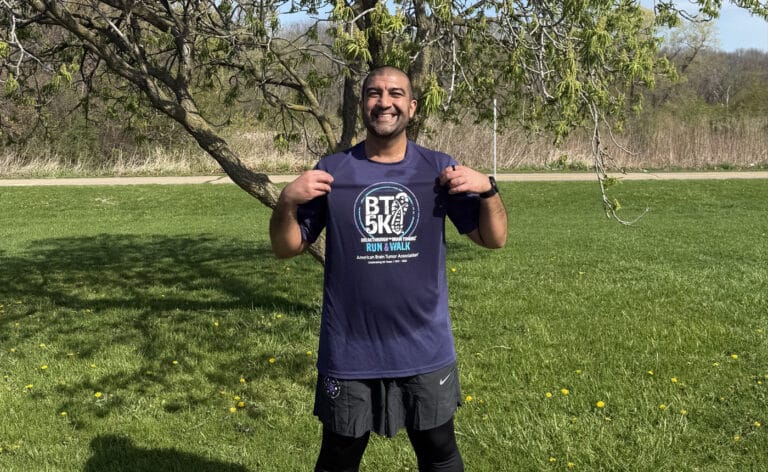Above photo: Will Smith, left, and Alec Baldwin star in Columbia Pictures’ “Concussion.” Photo by Melinda Sue Gordon. © 2015 Columbia Pictures Industries, Inc. All Rights Reserved
By David Himmel
Usually, when Hollywood depicts the true story of the ordinary guy/gal in an extraordinary situation, actors add a touch of glamor to the characters. But Julian Bailes, MD, who is portrayed by Alec Baldwin in the film Concussion, has his own Hollywood good looks.
Baldwin, however, nails Bailes’ demeanor and his barely there Southern drawl as well as his role in helping to reveal the devastating impact of repeated concussions.
Concussion, which opened Christmas Day, is the story of how the NFL was forced to come to terms with the dangerous truth that its sport was the cause of brain damage in many of its former players.
The film focuses on Pittsburgh forensic pathologist Bennet Omalu, MD, (played by Will Smith) and his discovery of the havoc-wreaking brain condition known as chronic traumatic encephalopathy (CTE) after performing the autopsy of former Pittsburgh Steelers center Mike Webster. Financially broke, and with increasingly erratic behavior, Webster died in 2002 after suffering years of degenerative behavior that synced directly with his degenerating brain.
As the Steelers’ team doctor from 1988 to 1998, and as Webster’s personal physician during his final years, Bailes saw Webster’s decline firsthand. What’s more, Bailes and Webster were close friends, and Bailes witnessed Webster losing his mind, his family, his fortune and, eventually, his life without knowing exactly what was wrong or how to truly help.
In the film, as it was in real life, three other former players end up on Omalu’s autopsy table within a short amount of time. They not only shared football, but also premature dementia and suicide. Terry Long drank antifreeze, Justin Strzelczyk drove his pickup truck into a tanker on a freeway at 90 miles per hour, and Andre Waters put a bullet in his head.
The movie shows how CTE was discovered. “They got the science right,” says Bailes, who is now the chairman of the Department of Neurosurgery at NorthShore University HealthSystem and co-director of the NorthShore Neurological Institute. “I think the moviemakers were concerned and didn’t want to falsely portray things. They accurately depicted the science and the time line of the journey that Bennet Omalu and I traveled.”
In the film, Omalu receives threatening phone calls from NFL loyalists, angry that he is trying to ruin the game by spreading his message of caution. Enter Alec Baldwin, um, Dr. Julian Bailes. His phone call to the beleaguered Omalu introduces him as a kindred spirit with inside knowledge of CTE as well as the NFL.
CTE is well known now. We’ve written about it at length in Chicago Health alongside other news outlets. But back in 2002, physicians thought the symptoms of CTE were evidence of early Alzheimer’s. That’s because currently, CTE cannot be detected while the patient is alive and is only apparent during an autopsy. In the future, that might change. “New research that we are performing in conjunction with UCLA holds great promise for soon being able to diagnose CTE-like changes in living individuals,” Bailes says.
An increasing amount of research uncovered the danger of concussions and CTE. “We had reported at the American Academy of Neurology meeting in 2000 … about former NFL players who were having lots of mental problems,” Bailes says. Then, in 2005, Omalu published a study “Chronic traumatic encephalopathy in a National Football League player” in the journal Neurosurgery detailing the Mike Webster case.
It still took time for the NFL to make changes in the sport. “The turning point,” Bailes says, “was at the end of 2009, the Congressional hearings. After that, with the possibility of Congress getting involved … there were sweeping changes, and for the first time, admissions that dementia is possible.”
Now, there have been many changes, from the NFL down to youth sports, Bailes says. Today, head-to-head contact in practice is virtually nonexistent. The NFL penalizes or fines players when the head is used as either a target or a weapon.
“At every level of play, [they’ve] taken out unnecessary, gratuitous head hits,” Bailes says. “I’m not sure there can be much more done.”
The film keeps Omalu and his young family at the center of the story, but Bailes was just as integral to what happened. As the team doctor, and then personal doctor to several former Steelers, he had a front-row seat to the mental and emotional deterioration of some former players. Watching the film, it’s hard not to wonder whether Bailes could have done more.
But at the time, CTE research was limited, Bailes says. “It really wasn’t a question of overlooking [the danger of concussions]. It’s just that we did not know in medical science that long-term brain damage from football concussions occurred. We didn’t know until the Webster case—the first proof in a living brain—that this was possible. We were getting whiffs of this but didn’t fully understand it. It was like a new disease.”
CTE is certainly not a new disease now, and Bailes’ research to treat and prevent CTE and concussions continues with great progress. When you watch the movie, take note of the woodpecker skull in Bailes’ office. It has significant meaning.
“I have an interest in biologically inspired discovery, and it has increased over the last 10 years,” Bailes says. “The woodpecker hits [its] head 85 million times in its life. We’ve learned a great deal from studying nature’s anatomical and physiological modifications that allow this creature to strike its head so many times and not so much as get a concussion.”
Some of what Bailes has learned has been put to use in the development of a collar designed to potentially reduce the chance of a concussion. It is expected to be on the market later this year.
Concussion, in short, is a good movie. For those familiar with CTE and the NFL’s troubled past, it’s interesting to see the drama played out on the silver screen. For those not in the know, it’s an enjoyable film that delivers this important issue in easy-to-digest bites.
“I hope this helps all sports,” Bailes says. “Something like a movie that is good will lead to greater appreciation. I hope it opens up a whole new aspect of science and an appreciation of what we were going through.”
This film is proof that we no longer have to be hit over the head with information in order to save lives.













